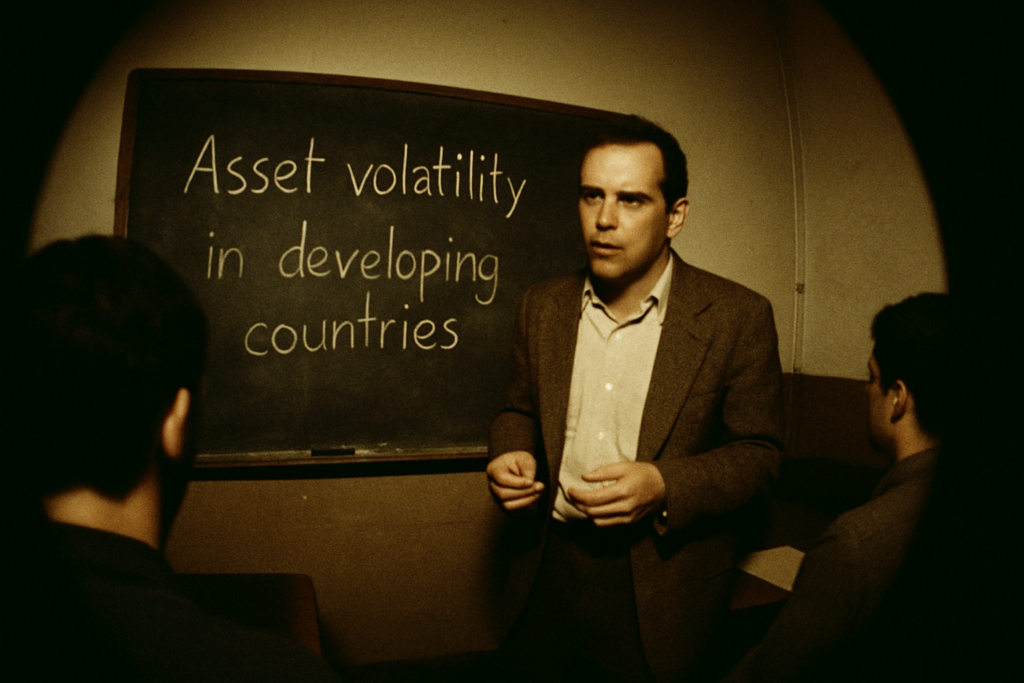Defining Risk Tolerance
Risk tolerance represents the level of uncertainty an individual is willing to accept in financial decision-making. Grasping this concept is vital for tailored investment strategies.
Importance of Understanding Risk Tolerance
Understanding risk tolerance helps in crafting investment strategies that align with personal financial goals. Misalignment can lead to stress and suboptimal investment returns. Consistency with one’s risk tolerance reduces emotional decision-making and aids in achieving long-term objectives.
Factors Influencing Risk Tolerance
Several elements influence risk tolerance. Age often correlates inversely with risk tolerance; younger investors might embrace more risk. Financial situation is pivotal, as greater wealth usually permits higher risk. Investment experience shapes comfort levels with uncertainty; seasoned investors may take calculated risks. Emotional disposition affects reactions to market volatility; those with high risk tolerance may not be fazed by fluctuations. Understanding these factors helps in accurately assessing and aligning one’s risk tolerance with investment decisions.
How to Assess Your Risk Tolerance
Accurately gauging risk tolerance is crucial for forming investment strategies tailored to personal financial goals. Understanding risk level helps prevent stress and steers decision-making.
Self-Assessment Techniques
- Several self-assessment techniques exist for evaluating risk tolerance.
- Start with a risk questionnaire; it provides structured questions about financial goals, risk scenarios, and hypothetical investment decisions.
- Analyze investment history to discern patterns or past decisions, revealing natural inclinations toward risk.
- Reflect emotionally on how you react to financial losses or gains to identify your comfort level amid market fluctuations.
- Utilize online risk tolerance calculators; these tools offer insights based on life stage, accumulated assets, and income stability.
Professional Consultation for Risk Assessment
Seeking professional advice further refines understanding of risk tolerance. Financial advisors conduct interviews and reviews of your financial portfolio to provide personalized assessments. A risk assessment includes comprehensive financial planning, where diversified strategies maintain alignment with risk preferences. If you consult certified financial planners, they apply industry-best practices and tools, ensuring your investment approach supports long-term objectives.
Tools and Resources for Measuring Risk Tolerance

Various tools and resources assist in gauging risk tolerance. Leveraging these can align investment decisions with personal preferences.
Online Risk Tolerance Questionnaires
Online risk tolerance questionnaires simplify assessing risk preferences by providing quick insights into one’s comfort with uncertainty. These typically consist of questions related to financial goals, reaction to market volatility, and investment experience. Platforms such as Vanguard, Schwab, and Fidelity host these questionnaires, which require only a few minutes to complete. Their results guide investors in allocating assets appropriately, ensuring choices match personal comfort levels with market risks.
Financial Planning Software
Financial planning software offers comprehensive solutions for evaluating risk tolerance alongside broader financial planning needs. Tools like Quicken, Personal Capital, and MoneyGuidePro analyze an individual’s financial situation, including income, expenses, and investment goals, to determine suitable risk levels. By inputting data such as age, net worth, and investment timelines, these platforms provide detailed risk assessments. This aids in crafting tailored strategies that reflect both present financial conditions and future aspirations.
Adapting Your Investment Strategy
Risk tolerance guides tailored investment strategies as it directly influences how comfort with uncertainty shapes financial decisions.
Aligning Investments with Risk Tolerance
Investment alignment with risk tolerance begins with assessing one’s comfort with uncertainty. Portfolio diversification minimizes potential losses and maximizes returns while reducing the emotional impact. Asset allocation should reflect individual risk appetite; for example, conservative investors might focus on bonds, while risk-takers might prefer stocks. Review risk assessment frequently and adjust asset distribution based on changes in financial goals or situations to maintain alignment.
Making Adjustments Over Time
Adapting investment strategies over time requires ongoing evaluation of risk tolerance. Life events like career changes or retirement can alter risk preferences, making regular assessments crucial. Younger individuals may gradually ease into riskier ventures as they gain confidence but prefer safer options nearing retirement. Market conditions might prompt strategic shifts; for instance, reducing stock exposure during downturns can limit losses. Consistent strategy adjustments ensure investment portfolios remain synchronized with evolving risk tolerance levels.
Common Misconceptions About Risk Tolerance
Many individuals misunderstand risk tolerance, leading to skewed financial decisions. Here are a few misconceptions clarified:
- One-Size-Fits-All: Risk tolerance isn’t universal. Personal financial goals, emotional responses, and life circumstances uniquely shape each individual’s tolerance levels. Assuming everyone has the same risk tolerance oversimplifies personal finance strategies.
- Age Equals Risk Level: While younger investors may generally assume more risk, it’s not always the case. Emotional stability and financial comfort play significant roles. For instance, a young, risk-averse individual may prefer conservative investments.
- Static Nature: Risk tolerance isn’t fixed. It evolves with life stages, market conditions, and personal growth. Regular reassessment ensures alignment with current financial aspirations and capabilities. Ignoring its fluidity can lead to outdated investment strategies.
- High Risk Equates High Reward: Many equate higher risk with higher returns. While higher potential exists, so does the possibility of more significant losses. It’s crucial to balance risk levels with one’s financial goals and emotional capacity to handle potential downturns.
Understanding these misconceptions aids in tailoring strategies that genuinely reflect personal risk perspectives. Accurately assessing and addressing misconceptions can improve financial decision-making and align investments with actual risk tolerance.



